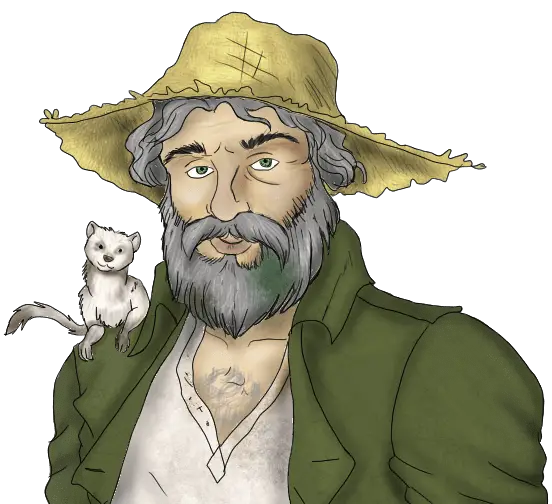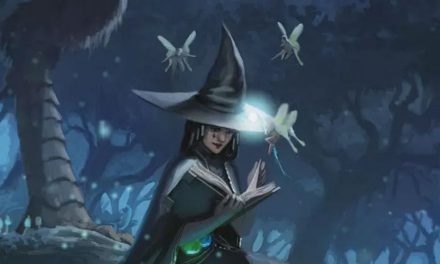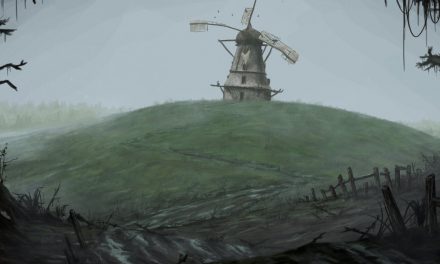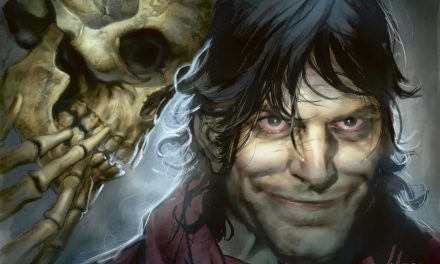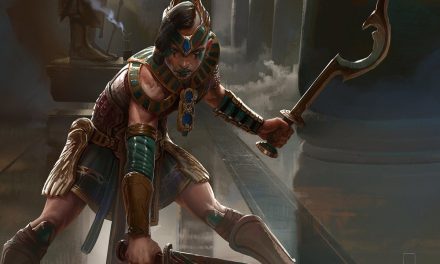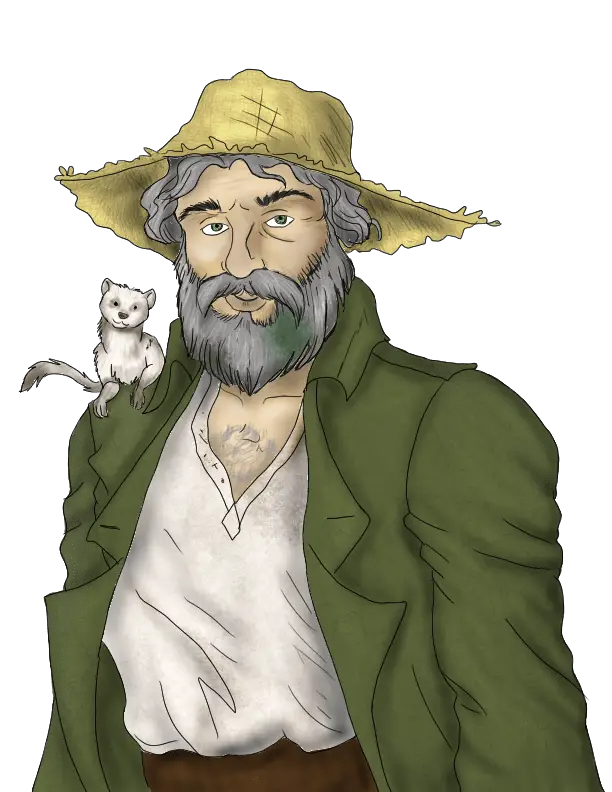The best Dungeon Masters empower their players’ creativity.
Instead of using the rules as a cudgel to stop players from doing things, these DMs look to the rules to adjudicate how a player can do the cool thing that they want.
I try to do this in games where I am the DM. Thankfully, I’ve been fortunate to typically have DMs like this in groups that I am a player.
But one campaign stands out above the rest. This is the campaign that led to my gnome artificer building a type of Death Star.
Thus, we attend the tale of Gimble Pamplemousse, a clever inventor who would go on to create the most powerful weapon ever incorporated in any of my D&D games.
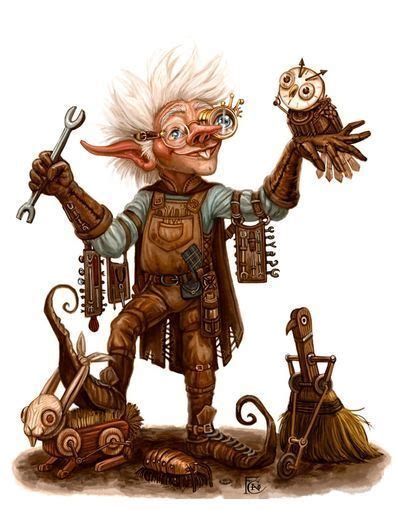
Meet Gimble Pamplemousse
Gimble Pamplemousse was a gnome inventor.
He had a small shop where he made various clockwork toys and alchemically-crafted sweets. Clockwork birds, fizzy sodas of every flavor imaginable, and more curious inventions filled his shop.
To Gimble, there was no better feeling than putting a smile on other peoples’ faces. He had a wild head of bright blue hair as a result of a failed alchemical experiment. The a-dork-able gnome looked at the world from behind coke-bottle glasses that magnified his eyes to four times their normal size. Working tirelessly and focusing on his inventions, Gimble would constantly try to outdo his previous works.
When people were impressed by his inventions, he would start to talk faster and faster. In his excitement, words would start to jumble until the listener was left to decipher a rapid-fire word salad.
However, his love for making other people happy often took precedence over his ability to run a business. As it turns out, simply giving away most of your products makes it difficult to turn a profit. Because of this, many of the Tinkerer’s Guild were irritated by the curious gnome.
Still, the leader of the Guild had a soft spot for Gimble and his innocent (if naïve) view of the world. While Gimble represented a massive drain on the Guild’s finances (as they constantly had to cover his losses), he did a great job at keeping the wonder of the engineering trade on display for the whole city.
Nevertheless, calls for removing Gimble Pamplemousse from the guild became louder and louder. The Guildmaster had to act soon.
Despite his eccentricity and unintentionally annoying behavior, nobody could deny Gimble’s brilliance.
Having heard of the mayor of the city’s plans to launch an adventuring party to explore the wilds, the Guildmaster had an idea…
He drafted a proposal for the mayor that would send Gimble as an ambassador for the Guild’s traveling sales initiative.
The Adventure Begins!
Of course, there wasn’t actually a traveling sales initiative, but Gimble was excited to have been the one selected.
He loaded up all of his tools and materials and went to meet the rest of the adventuring party.
It just so happened that this was all taking place on Gimble’s 100th birthday. He was excited to make friends to help him celebrate.
You see, Gimble didn’t exactly have friends prior to this adventure. Most people preferred his company in very small doses. After all, he was quite the excitable little fellow.
But this adventure was expected to take several months! That meant that this group would be around longer than any friends the gnome had ever had!
Meeting the city’s mayor, the group was tasked with adventuring the large areas of unexplored and unsettled territory beyond the city.
The goal was simple and they had three main objectives. They were to explore as much of the land as possible, identify a place to begin building a town, and clear out any threats.
A trading post outside of town would provide shelter and provisions closer to the region to be explored. This was the party’s first destination.
To Gimble, this was the greatest thing that had ever happened to him. Most of his birthdays were celebrated alone with his inventions. But he now had five new friends (plus the family that owned the trading post) to celebrate with him!
After a night of much ale, fireworks (built by Gimble that nearly caused a wildfire), and celebration, the party began exploring the regions of the map first thing in the morning.
Gimble’s Inventions
While Gimble largely stayed oblivious to the dangers that the party was facing, he did quickly prove very useful. He had brought a large assortment of mechanical knick-knacks that greatly helped the party. He would continually tinker with and improve these when not actively working on something else.
His clockwork owl, for example, was later upgraded with an Alarm feature. In time, he could operate it with a remote control. Though the best upgrade was its ability to release a weaker version of Cloudkill around it.
I mean… farting robot owls make every game better.
Just saying.
Using rules from Xanathar’s Guide to Everything and some creativity between the DM and myself, Gimble pretty continuously had several projects that he could work on in the party’s downtime.
(Quick side note: to learn more about what you can do during downtime, click here to check out our article!)
Because I played Gimble before the artificer class was officially released, he used the playtest version in the 2017 Unearthed Arcana.
This meant that he also got a Thunder Cannon / Blaster Rifle. We roleplayed it as being remarkably terrifying and of very questionable legality and reliability. Because I seemed to always roll very poorly for Gimble’s attacks, we blamed it on the Thunder Cannon being a prototype.
Yup… it’s entirely the Thunder Cannon’s fault…
Other devices including windup frogs that can deliver potions in a straight line, springy boots that would help the wearer ascend, and other items based on toys and novelties.
Check Out: Classic Toy-Inspired Homebrew Artificer Items!
We’ve Got A Town!
As we continued exploring the regions on the map, the party had a ton of successes.
We overthrew a fearsome group of bandits, slayed a young green dragon, and destroyed a huge group of goblin cultists.
As we secured trade routes and cleared out the many threats in the region, we eventually came across the perfect place to begin building a town.
There was nearby water, ample land for farming and hunting, and plenty of resources nearby for miners and woodcutters.
In seemingly no time at all, word was sent back to the Mayor and we began to have our first settlers.
Homes and shops were built, the party established a defensible base of operations, and we were given command of the town by the city.
But one thing continually stood out to the party, a nearby mountain with an observatory on the top of it. Gimble, in particular, was curious to investigate.
So the party went to check it out.
With much work, we were able to clear it out of the numerous undead that filled the halls. As it turned out, the observatory was just one part of what was some kind of ancient fortress.
While the party gathered clues to decipher the origins of this fortress, Gimble focused exclusively on repairing the massive telescope in the observatory.
Once the route between the fortress and town was secured, Gimble would spend all of his time repairing the device.
However, another threat would soon make its presence known…
The Dragon Turtle
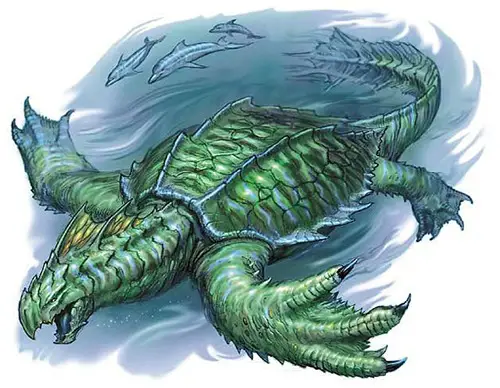
The lake near the town served many uses.
It was big enough that it could be used as a small port for trade and further exploration. Additionally, Gimble had spent some time building machines that would serve to purify the water for consumption and use in farming.
But the activity attracted the attention of something far more terrifying than we had previously encountered.
A Dragon Turtle lied beneath the surface of the water and took an interest in the town. It began demanding tribute to allow ships to pass and the town was forced to comply.
The amount of tribute that the Dragon Turtle was demanding kept increasing. Each demand became more forceful and contained greater threats if we didn’t give in to the demands.
Eventually, the town was nearing the point of collapsing in on itself by trying to satisfy the Dragon Turtle.
But over the several months of dealing with this, Gimble had been working on a project in his observatory fortress.
When it was finished, Gimble invited the party to join him for the unveiling of his masterpiece: Pamplemousse’s Particularly Powerful Solar Lens.
Or as the party’s Fighter and leader said while facepalming: “He… just… built the Death Star…”
A Giant Frickin’ Laser
As it turns out, Dragon Turtles are like most other things in that they are particularly weak to giant lasers.
When the Dragon Turtle had first begun extorting the town for tribute, the party’s leader expected things to get worse with time. He asked Gimble if he could build something that might help the party deal with the Dragon Turtle.
Gimble realized that the telescope could be rotated 360 degrees and that it was positioned at the highest point for hundreds of miles. By fashioning additional lenses and funneling them into the telescope, he would be able to power a massive laser.
Of course, this relied on the weather being favorable for obvious reasons.
So on one bright and sunny day, the party (minus Gimble) approached the shoreline and called the Dragon Turtle.
Emerging from the water, the creature roared loudly as the party informed it that they would no longer be paying tribute. Not pleased with this answer, the Dragon Turtle began to threaten the party even more.
Meanwhile, Gimble had repositioned his giant telescope and focused in on the Dragon Turtle. Removing the coverings from his “feeder” lenses that gathered the sunlight, he amplified the heat until all that could be seen was a massive continuous blast of light from the tower.
Bits of (cooked) Dragon Turtle exploded all over the place. In the distance, echoing from the top of the observatory tower, the delighted laughter of a gnome could be heard.
“It works! It actually works!”
Where Do We Go From Here?
The creation of the Particularly Powerful Solar Lens created a new problem: what do we do now?
There was virtually no reason to investigate problems that would arise.
Trolls attacking one of our trade routes? Where at exactly?
ZAP!
Bandits are building an encampment to the South? What coordinates?
The next sunny day: ZAAAAAP!
Realistically, I didn’t expect it to be a game-ender. Surely, we could have found some reason to continue adventuring and not relying on the strategy of “blasting our enemies with a giant laser.”
But our group rotates DMs and the current DM was starting to get the itch to be a player again, so it worked out.
We may return to the storyline at some point, but, even if we don’t, I’m just glad that the Gnomish Death Star will live on in our group’s memories.
To me, it’s those memories that will stick with a group long after they forget the characters’ names or the point of the adventure.
“Remember that time Mike took out a whole squad of hobgoblins on his own?”
“What about that time Michelle cast that spell that made the whole fortress of enemy soldiers run away?”
Not only is the Gnomish Death Star just a fun story to remember, but it’s an example of what happens when the DM says yes. There were plenty of rolls to make, gold to spend, and mistakes to fix along the way in creating what would become our party’s ultimate weapon.
Because the DM was just as excited as us to see if this crazy thing would work, we were given elements in the game that added to the goal of creating the laser telescope. Adventures and side quests helped us on our goal without pulling away from the main storyline.
The point that I’m trying to make is that you can’t really force those memories to happen. As a DM, saying “yes” and using the rules to encourage players is the single greatest power that you have.
Conclusion
Anyhow, that’s the story of the time that my group built a Death Star.
A reader had reached out and asked me if there are any D&D stories from my own games that I could share. I have several that I would love to relive and share in the future, so let me know in the comments if that’s something that would interest you!
Until next time!


